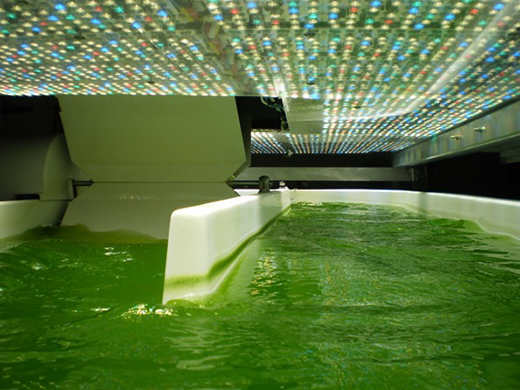Climate-Simulated Algae Ponds at PNNL-Sequim

The coastal research mesocosm environments at the Marine and Coastal Research Laboratory at PNNL-Sequim enable controlled and parallelizable mid-scale research on shoreline, intertidal, and near-shore ecosystems.
(Photo by Andrea Starr | Pacific Northwest National Laboratory)
PNNL-Sequim has indoor climate-simulation raceway ponds for microalgae culture that are monitored under carefully controlled conditions. These ponds simulate outdoor ponds at any season and any location in the world, as long as historical weather data are available. These double-hulled fiberglass ponds have a working volume of 800 L and a variable culture depth up to 26 cm. The water temperature is controlled by a computer via heating and cooling coils between the pond hulls. In this way, ponds can be kept either at constant temperature or varied from 0-40°C to simulate diurnal water temperature fluctuations in outdoor ponds. We use computer-controlled LED lighting systems that deliver from 0 to 2,700 µmoles/m2-sec to simulate diurnal sunlight intensity fluctuations at any geographic location and date range. These LED lights can replicate full spectrum sunlight or spectral variation from sunrise to sunset, winter to summer. We also control the water temperature, incident light intensity, pH, and dissolved oxygen concentrations by computer. Because we have access to clean seawater and groundwater, we can cultivate both marine and fresh water organisms in these ponds.

